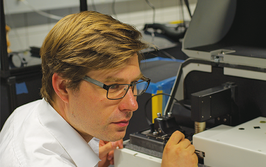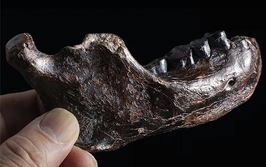Non-invasive Prostate Cancer Screening
Can SERS accurately detect the early stages of the most common male cancer?
The US Preventative Services Task Force now recommends against the use of prostate specific antigen (PSA)-based screening because of the potential for over diagnosis. Hoping to fill the gap, researchers in China have combined surface-enhanced Raman scattering (SERS) with support vector machine (SVM) algorithms to develop a non-invasive diagnostic test for prostate cancer (1).
The technique developed by Shaoxin Li and his team at Guangdong Medical College involves mixing the subject’s blood serum with silver nanoparticles ahead of SERS. The resultant spectrum is then processed using an SVM classifier model. Other research teams have experimented with SERS in similar applications, but the signals of prostate cancer have typically been too subtle to accurately detect.
The SVM classifier models developed by Li’s team were able to distinguish between the SERS spectra of the 68 cancer patients and 93 healthy volunteers involved in the study with an accuracy of 98.1 percent, compared with 91.3 percent for principle component analysis methods, which the researchers used to assess the performance of the SVM algorithms.
“The fundamental idea of SVM involves separating classes with the optimal hyperplane, which maximizes the margin of separation between the hyperplane and the closest data points on both sides. SVM has been successfully applied in various applications including face recognition, text categorization and gene selection, and could also be applied to other spectroscopic studies,” says Li. “This study demonstrates that label-free serum SERS analysis technique combined with SVM diagnostic algorithm has great potential for noninvasive prostate cancer screening.”
The technique only requires 10 μl of serum to perform the measurement, and can be used conveniently and repeatedly for high-risk patients. Li says it’s also a very simple process. “Perhaps one of the main challenges of the work was adopting appropriate SERS-active nanoparticles, which is important because the reproducibility of the Raman scattering signals is related to their homogeneity, stability, biocompatibility and enhanced capability,” explains Li. “To build the classifier models for SVM, we collected serum samples with a rich diversity.”
The team has not yet performed direct comparisons with other screening methods. The next goal of the work will be to develop a study plan for SERS and SVM to explore other cancer types and cancer staging.
- Shaoxin Li et al., “Noninvasive Prostate Cancer Screening Based on Serum SERS and SVM”, Applied Physics Letters, 105 (9), DOI: 10.1063/1.4892667 (2014).
"Making great scientific magazines isn’t just about delivering knowledge and high quality content; it’s also about packaging these in the right words to ensure that someone is truly inspired by a topic. My passion is ensuring that our authors’ expertise is presented as a seamless and enjoyable reading experience, whether in print, in digital or on social media. I’ve spent seven years writing and editing features for scientific and manufacturing publications, and in making this content engaging and accessible without sacrificing its scientific integrity. There is nothing better than a magazine with great content that feels great to read."

















